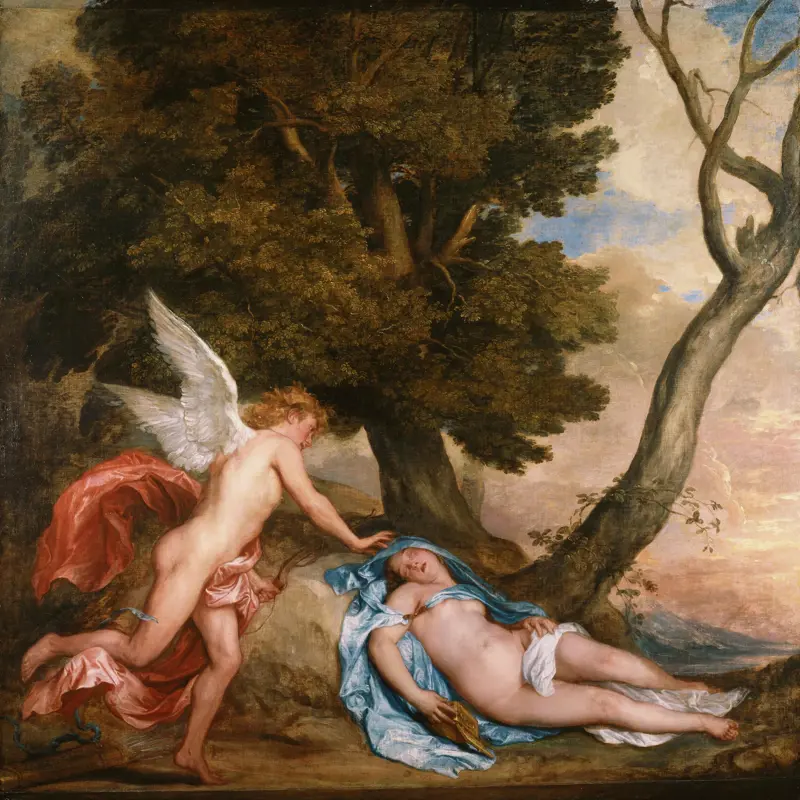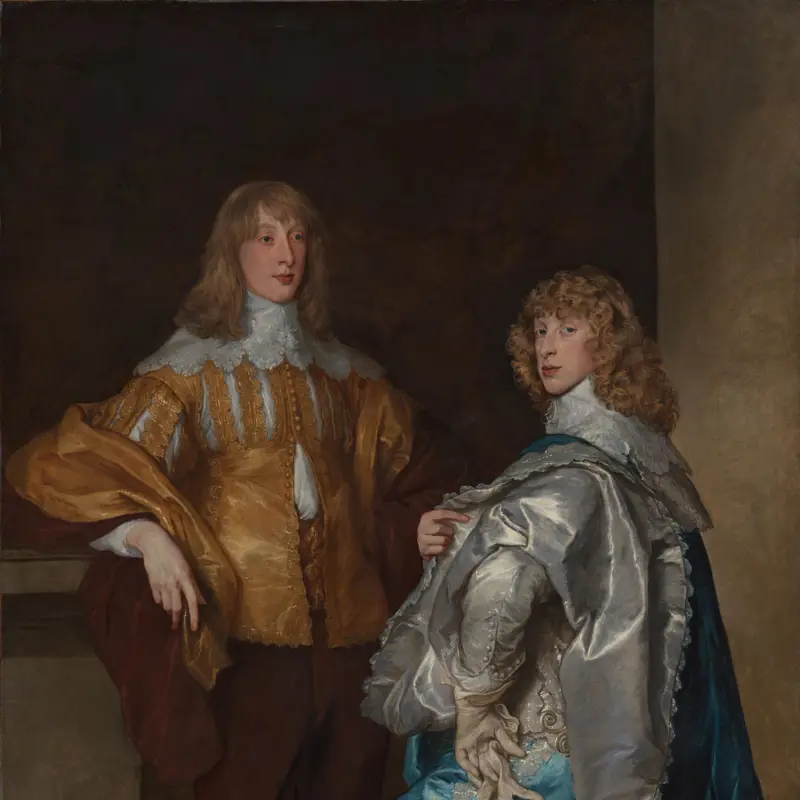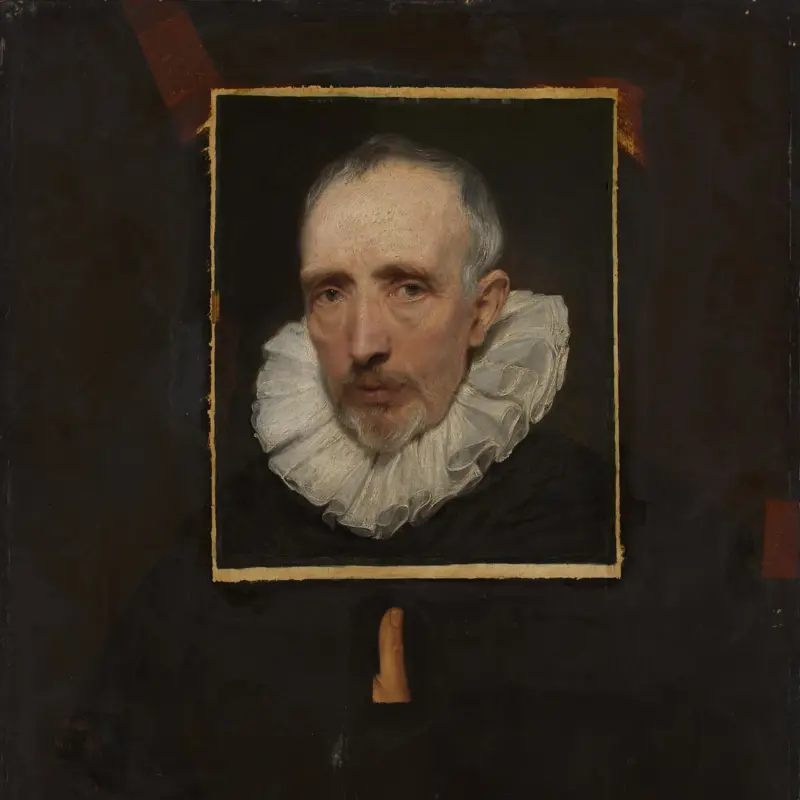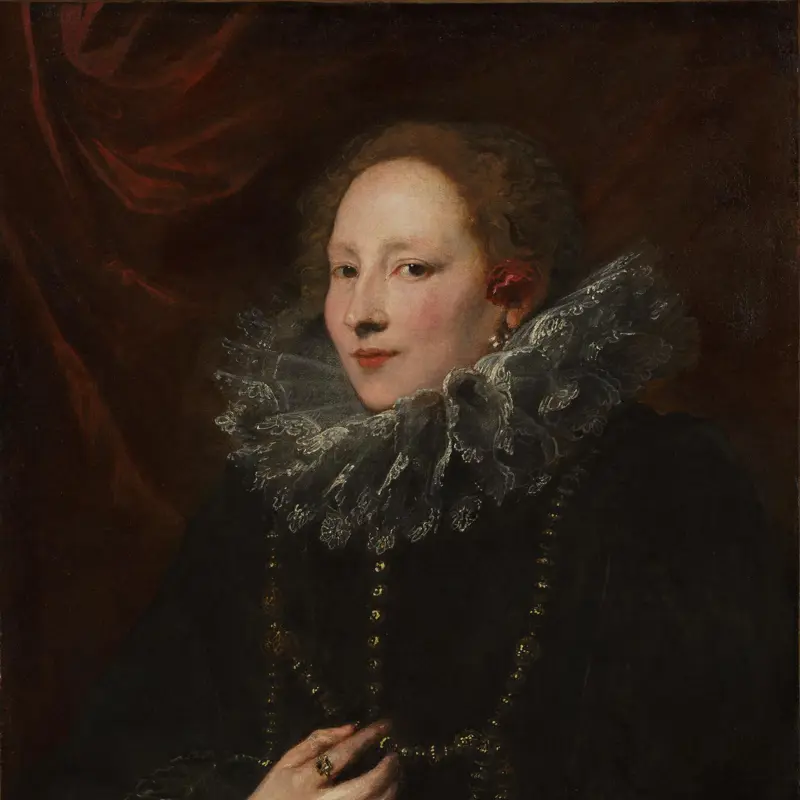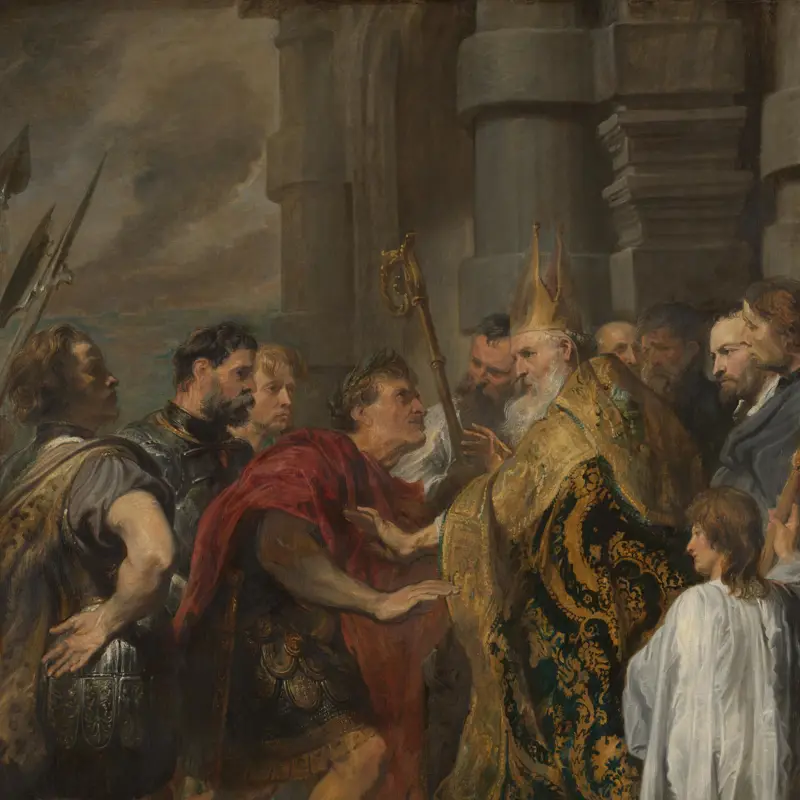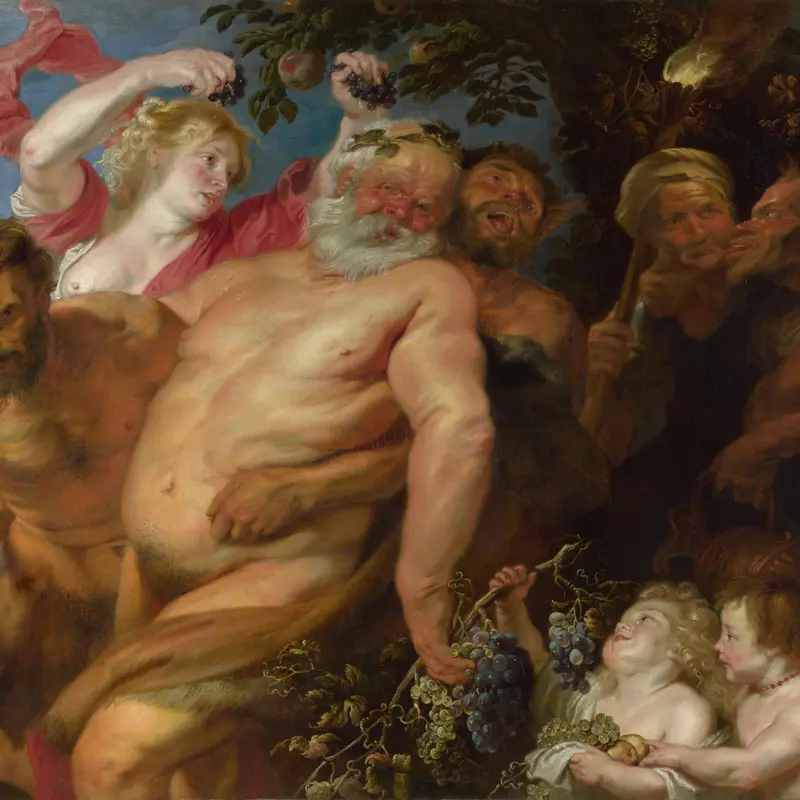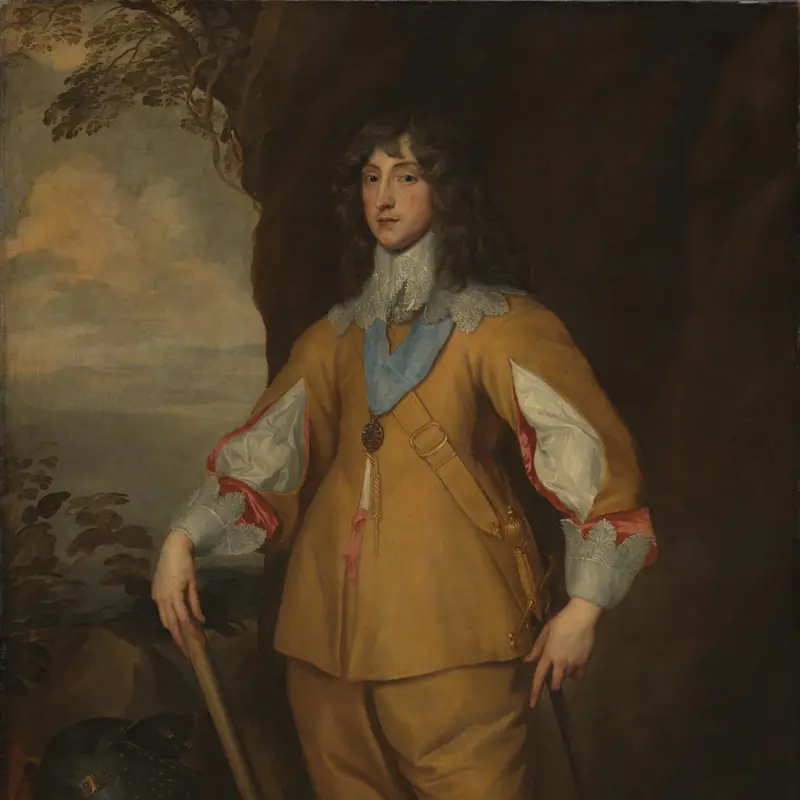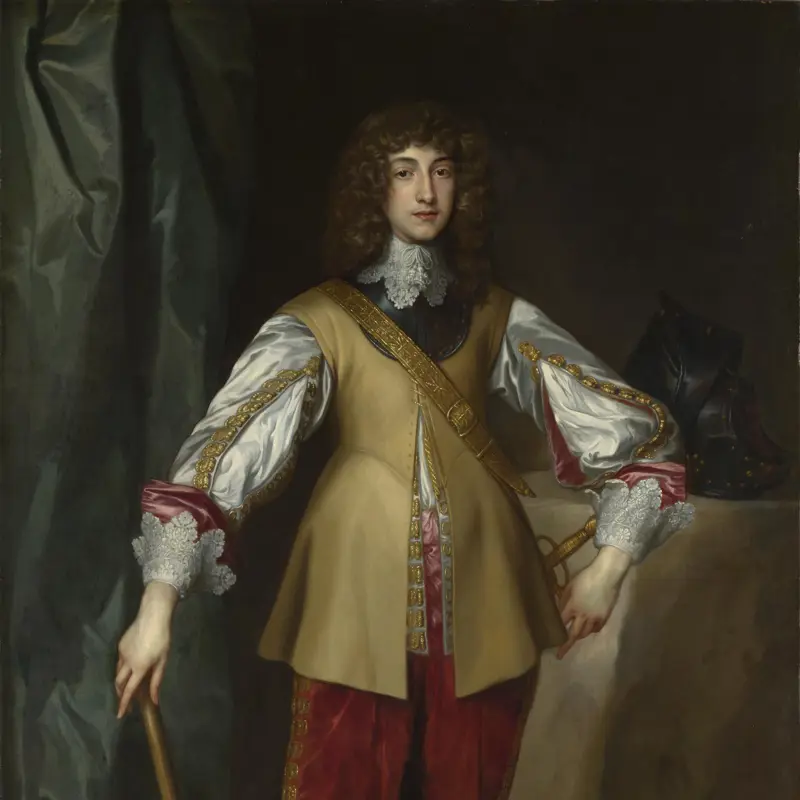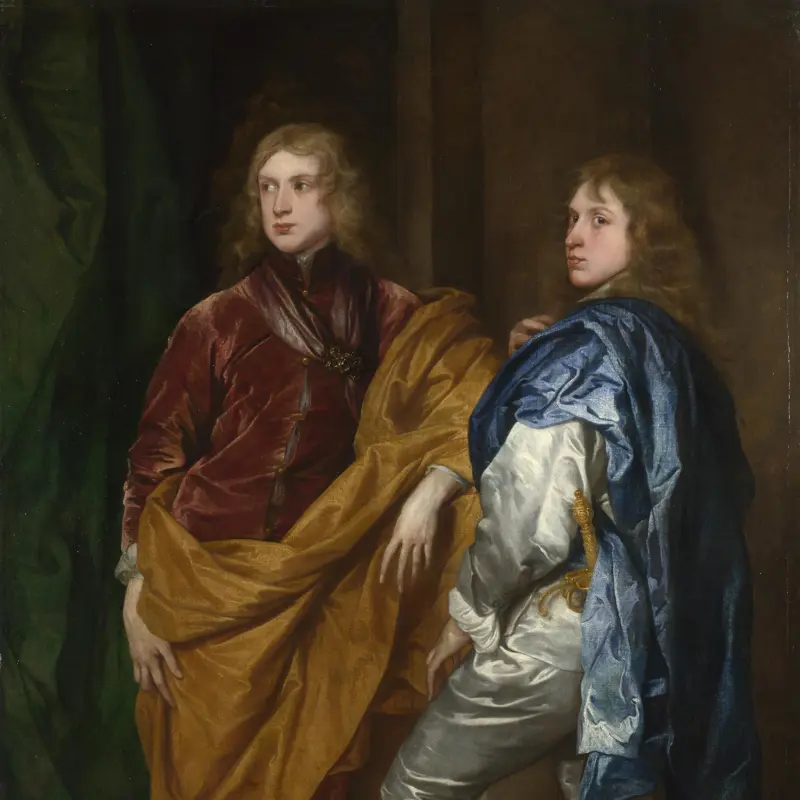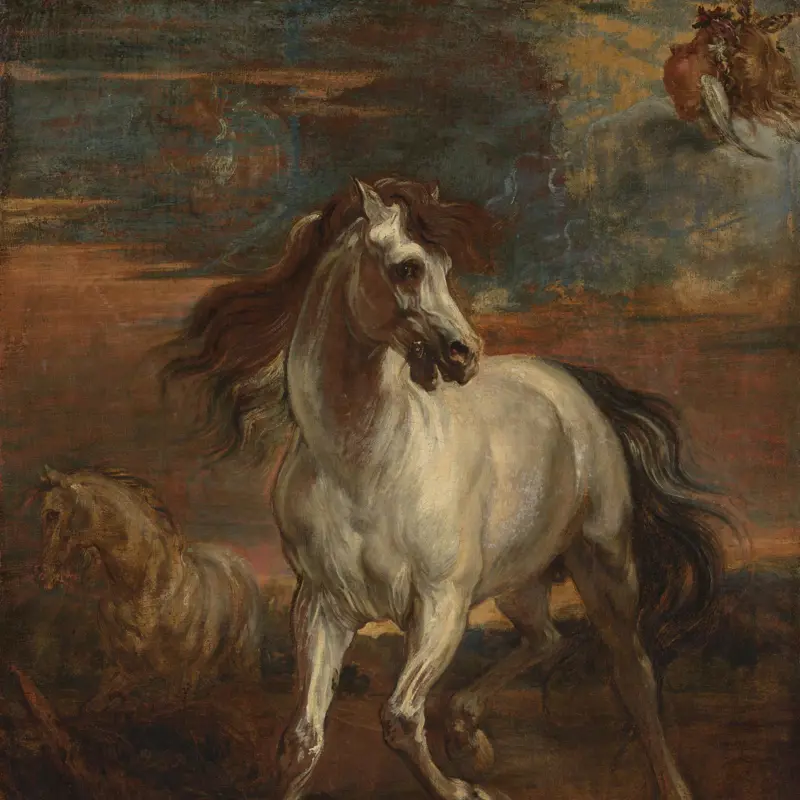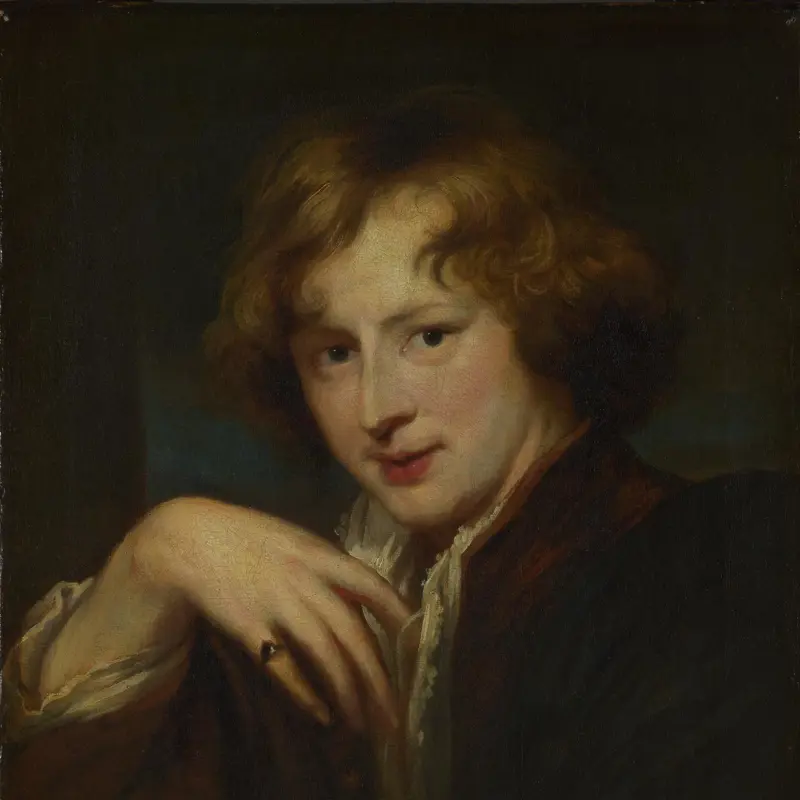Anthony van Dyck, 'Charity', about 1627-8
About the work
Overview
In his first letter to the Corinthians, Saint Paul outlines the importance of faith, hope and charity, naming charity as the greatest of the three. At the time this picture was painted, charity meant combining the love of god with love of one’s neighbour.
From the sixteenth century onward, charity was often represented as a woman, shown breastfeeding a child or children; Van Dyck instead shows three infants clinging to her. She is celestial Charity and her upward glance links her to heaven – the source of her strength as she struggles to fulfil others' needs. The cloak billowing behind her is painted in shades of ultramarine, the traditional colour of the Virgin Mary.
Van Dyck produced this shortly after his return from a long stay in Venice, where he was influenced by the works of Titian. The rich colours of the artist are evident in the lustrous drapery, although it’s thought that these have changed over time and were once a little more subdued.
Key facts
Details
- Full title
- Charity
- Artist
- Anthony van Dyck
- Artist dates
- 1599 - 1641
- Date made
- About 1627-8
- Medium and support
- Oil on wood (probably oak)
- Dimensions
- 148.2 × 107.5 cm
- Acquisition credit
- Bought, 1984
- Inventory number
- NG6494
- Location
- Room 21
- Collection
- Main Collection
- Frame
- 19th-century English Frame
Provenance
Additional information
Text extracted from the National Gallery’s Annual Report, ‘The National Gallery Report: January 1982 – December 1984’.
Bibliography
-
1801J. Britton and E.W. Brayley, The Beauties of England and Wales, 19 vols, London 1801
-
1806J. Britton, History Etc of Corsham House, London 1806
-
1842J. Smith, Supplement to the: A Catalogue Raisonné of the Works of the Most Eminent Dutch, Flemish, and French Painters: In Which is Included a Short Biographical Notice of the Artists, with a Copious Description of Their Principal Pictures […], vol. 9, London 1842
-
1853P.J. Mariette, Abecedario de P.J. Mariette et autres notes inédites de cet amateur sur les arts et les artistes […] annoté par MM. Ph. de Chennevières et A. de Montaiglon, vol. 2, eds P. de Chennevières and A. de Montaiglon, Paris 1853
-
1854G.F. Waagen, Treasures of Art in Great Britain: Being and Account of the Chief Collections of Paintings, Drawings, Sculptures, Illuminated Mss. […], vol. 2, trans. E. Eastlake, London 1854
-
1874'The Private Collections of England: Lowther Castle', The Athenaeum, I, 1874
-
1882J. Guiffrey, Antoine van Dyck: Sa vie et son oeuvre, Paris 1882
-
1886M. Rooses, L'œuvre de P. P. Rubens: Histoire et description de ses tableaux et dessins, 5 vols, Antwerp 1886-92
-
1890M. Rooses, L'oeuvre de P. P. Rubens, Antwerp 1886
-
1900L.H. Cust, Anthony van Dyck: An Historical Study of his Life and Works, London 1900
-
1931G. Glück, Van Dyck, des Meisters Gemälde, Stuttgart 1931
-
1937E. Wind, 'Charity: The Case History of a Pattern', Journal of the Warburg and Courtauld Institutes, I, 1937, pp. 322-30
-
1957E. du G. Trapier, 'The School of Madrid and van Dyck', The Burlington Magazine, XCIX/653, 1957
-
1985National Gallery, The National Gallery Report: January 1982 - December 1984, London 1985
-
1986Martin, Gregory, National Gallery Catalogues: The Flemish School, circa 1600 - circa 1900, London 1986
-
1988E. Larsen, The Paintings of Anthony van Dyck, Freren 1988
-
1999G. Luijten and C. Depauw, Anthony van Dyck as a Printmaker, Amsterdam 1999-2000
-
1999A. Roy, 'The National Gallery van Dycks: Technique and Development', National Gallery Technical Bulletin, XX, 1999, pp. 50‑83
-
1999R. White, 'Van Dyck's Paint Medium', National Gallery Technical Bulletin, XX, 1999, pp. 84-8
-
2000Egerton, Judy, National Gallery Catalogues: The British Paintings, revised edn, London 2000
-
2001
C. Baker and T. Henry, The National Gallery: Complete Illustrated Catalogue, London 2001
-
2002S. Turner and F.W.H. Hollstein, The New Hollstein Dutch & Flemish Etchings, Engravings and Woodcuts, 1450-1700: Anthony van Dyck, Part VIII, ed. C. Depauw, Amsterdam 2002
-
2002Sotheby's, Old Master Paintings Part One, London, 10 July 2002
-
2002S. Turner and F.W.H. Hollstein, Anthony van Dyck, ed. C. Depauw, New Hollstein Dutch & Flemish Etchings, Engravings and Woodcuts, 1450-1700 11, 9 vols, Amsterdam 2002
-
2004H. Vey et al., Van Dyck: A Complete Catalogue of the Paintings, New Haven 2004
-
2011A. Leclair, 'Rubens's "Rape of the Sabines" and Van Dyck's "Charity": A Failed Purchase by Louis XV', Burlington Magazine, CLIII/1301, August 2011, pp. 526-7
-
2016E. Bergvelt and M. Jonker, Dutch and Flemish Paintings: Dulwich Picture Gallery, London 2016
About this record
If you know more about this work or have spotted an error, please contact us. Please note that exhibition histories are listed from 2009 onwards. Bibliographies may not be complete; more comprehensive information is available in the National Gallery Library.

